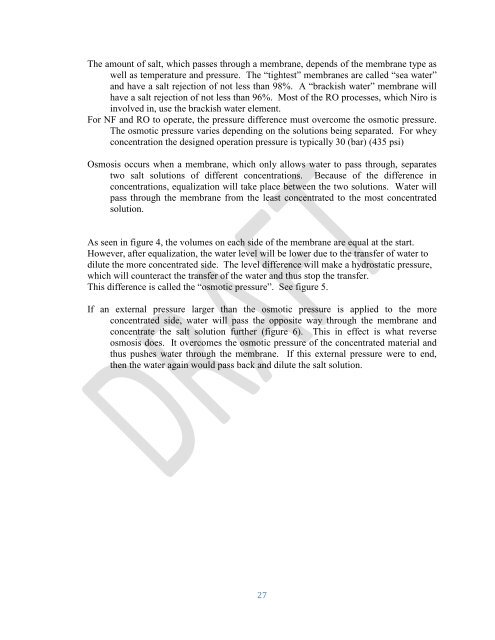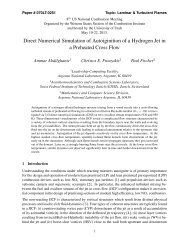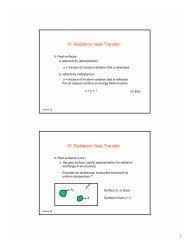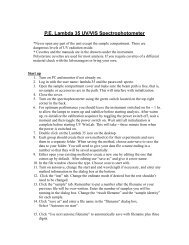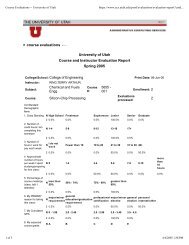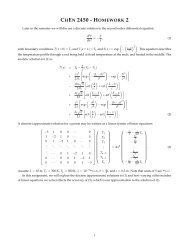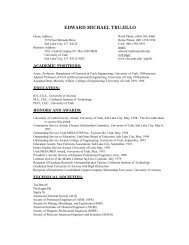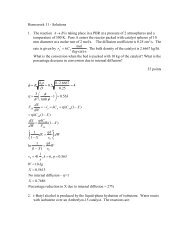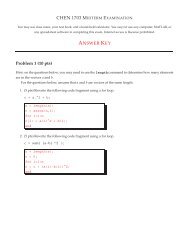Standard Operating Procedure - Ultrafiltration - Department of ...
Standard Operating Procedure - Ultrafiltration - Department of ...
Standard Operating Procedure - Ultrafiltration - Department of ...
- No tags were found...
Create successful ePaper yourself
Turn your PDF publications into a flip-book with our unique Google optimized e-Paper software.
The amount <strong>of</strong> salt, which passes through a membrane, depends <strong>of</strong> the membrane type aswell as temperature and pressure. The “tightest” membranes are called “sea water”and have a salt rejection <strong>of</strong> not less than 98%. A “brackish water” membrane willhave a salt rejection <strong>of</strong> not less than 96%. Most <strong>of</strong> the RO processes, which Niro isinvolved in, use the brackish water element.For NF and RO to operate, the pressure difference must overcome the osmotic pressure.The osmotic pressure varies depending on the solutions being separated. For wheyconcentration the designed operation pressure is typically 30 (bar) (435 psi)Osmosis occurs when a membrane, which only allows water to pass through, separatestwo salt solutions <strong>of</strong> different concentrations. Because <strong>of</strong> the difference inconcentrations, equalization will take place between the two solutions. Water willpass through the membrane from the least concentrated to the most concentratedsolution.As seen in figure 4, the volumes on each side <strong>of</strong> the membrane are equal at the start.However, after equalization, the water level will be lower due to the transfer <strong>of</strong> water todilute the more concentrated side. The level difference will make a hydrostatic pressure,which will counteract the transfer <strong>of</strong> the water and thus stop the transfer.This difference is called the “osmotic pressure”. See figure 5.If an external pressure larger than the osmotic pressure is applied to the moreconcentrated side, water will pass the opposite way through the membrane andconcentrate the salt solution further (figure 6). This in effect is what reverseosmosis does. It overcomes the osmotic pressure <strong>of</strong> the concentrated material andthus pushes water through the membrane. If this external pressure were to end,then the water again would pass back and dilute the salt solution.27


